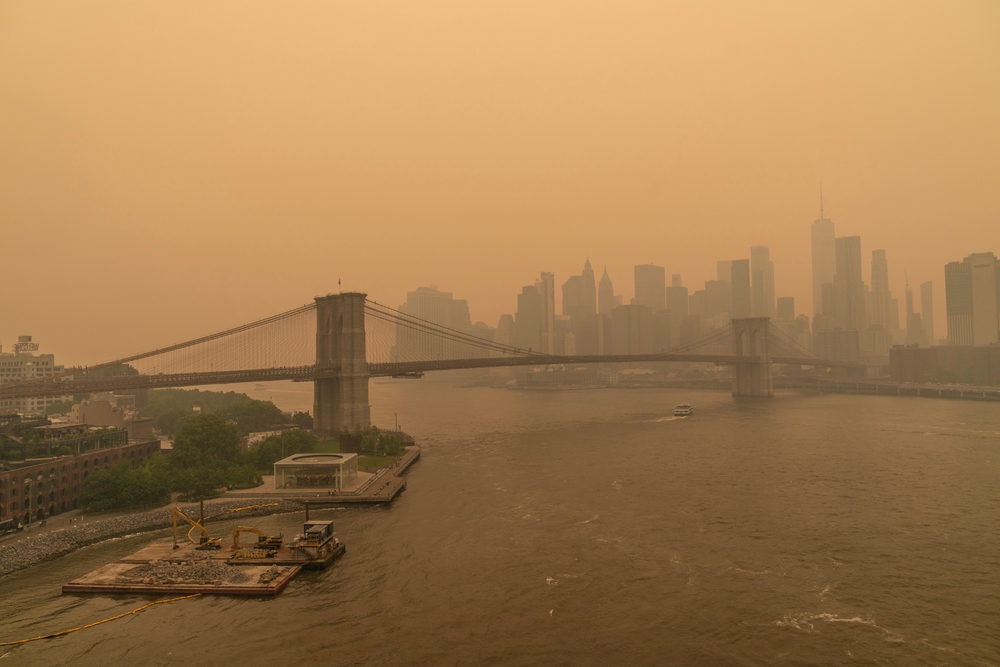Wildfires And Indoor Air Quality (IAQ)
As wildfires are becoming a more common occurrence, air quality poses a problem both indoors as well as outdoors. Homes and other buildings that we inhabit are not airtight. Outdoor air leaks in through windows doors and cracks in your home’s foundation. Environmental medicine addresses the impact of smoke, molds, stove emissions, and dust mites on our health. Smoke pollution, a growing phenomenon, is at the forefront of those concerns. Air purifiers have become a necessary indoor staple for respiratory health. Clean air, where we live, should provide a necessary respite from outdoor pollution.
There are many air purifiers on the market today, but few are designed to handle smoke. None are made as well as those from Austin Air. Here is what you need to know when purchasing an air purifier to help you remove wildfire smoke from your indoor air.
Smoke - A Complex Challenge
Wildfire smoke is a complex mixture of particles and gasses. In this post we will look at the components of wildfire smoke, its health implications, and the best solutions to maintain good indoor air Quality (IAQ.)
Particulates
Smoke contains many kinds of particles including sulfuric acid, ammonium sulfate, ammonium nitrate, sodium chloride, soot, metals, dust particles, and biological materials including pollen and mold spores. According to the EPA, particle pollution is the main component of wildfire smoke and is our biggest health challenge. Smoke particles range in size and here, size matters. Smoke contains coarse and fine particles.

Coarse particles that are between 2.5 and 10 microns in size. These particles can travel through the large airways including the nasal passages, throat, and bronchi. Coarse particles are associated with allergies, asthma, and chronic lung disease.
Fine particles are between 2.5 and 1.0 microns in size. These particles can reach the small airways and alveoli. Fine particles can enter the bloodstream. Fine particles are potentially carcinogenic and are considered the biggest health problem with wildfire smoke. The EPA states that fine particulate matter can increase the risk of cardiovascular events.
Particle Removal
Austin Air uses three particle filtering methods and is a great choice for helping to contain smoke particles and other environmental challenges.
Each Austin Air cleaner has three particle filters:
- Large Particle Pre-Filter Our large particle pre-filter removes dust and pet dander.
- Medium Particle Filter Our medium particle removes molds, mold spores, and pet dander.
- Small Particle Filter – HEPA (High-Efficiency Particulate Air) Filter. Austin Air uses 60 sq. ft. of true medical grade HEPA which is pleated to increase efficiency. Removes 99.97% of all particles larger than 0.3 microns and 95% of all particles larger than 0.1 microns. In a recent study by NASA, medical-grade HEPA with an activated carbon bed was found to be effective in filtering nanoparticles to .015 microns. HEPA filters remove both the fine and ultrafine particles found in wildfire smoke.
Gaseous Pollutants
Wildfire smoke contains gaseous pollutants including carbon monoxide, carbon dioxide, sulfur dioxide, nitrogen oxides, benzene, and toluene. Activated carbon is the best method for removing gasses and VOCs from the air. When toxic chemicals, particles, or aerosols come in contact with our activated carbon, the airborne toxins enter millions of pores on the surface of activated carbon. Like a sponge, the activated charcoal carbon adsorbs the toxic material.
Our charcoal filters also have zeolite. Zeolites are commercial adsorbents. Together with the activated carbon, they remove over 3,000 chemicals, gasses, and odors from the air.
Motor and Fan
For an effective air cleaning solution, you need the best air filtering technology paired with a powerful fan to filter the air in your room. Austin Air cleaners are rated at 240 CFM. That means the AA will filter 240 cubic feet of air in one minute. For a 10’ x 10’ room with 10’ ceilings, you’ll get up to 14 air exchanges in an hour. At The Air Cleaner Store, we can help you determine the ACH (air changes per hour per hour) our air cleaner will deliver in your home or office. Just provide us with the dimensions of your space.
Safeguard your respiratory health with an Austin Air cleaner. David at Air Cleaner Store is committed to helping people to transform their homes and offices into clean air environments.
The Air Cleaner Store would like to extend a limited-time discount and free shipping on the purchase of an Austin Air cleaner. Use the coupon code SMOKE in our shopping cart. Visit our website to learn more about indoor air quality and health.
